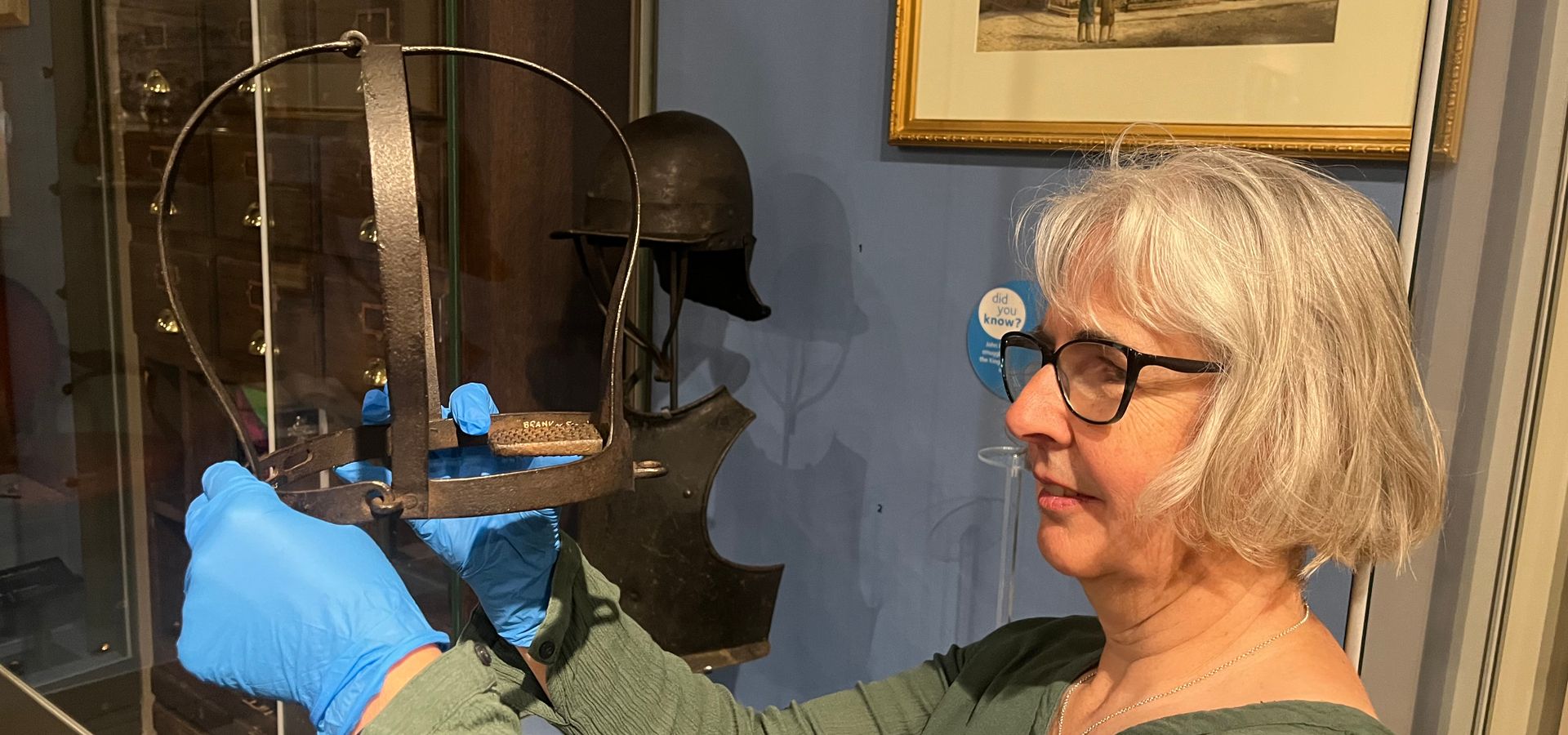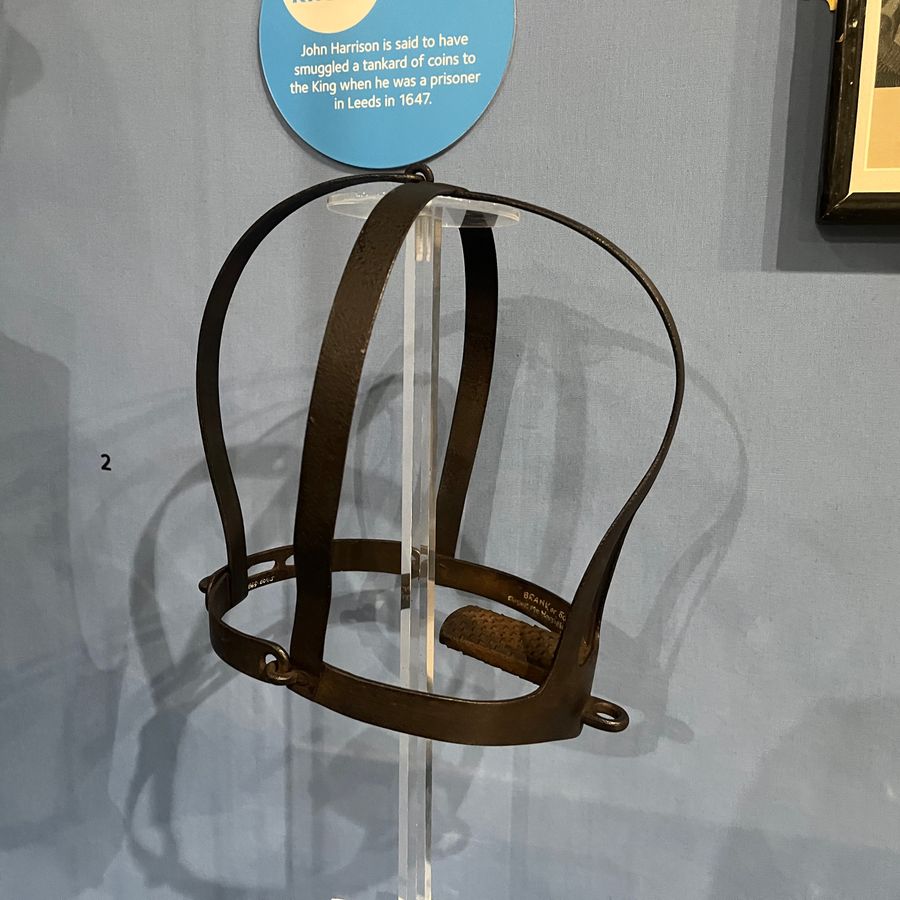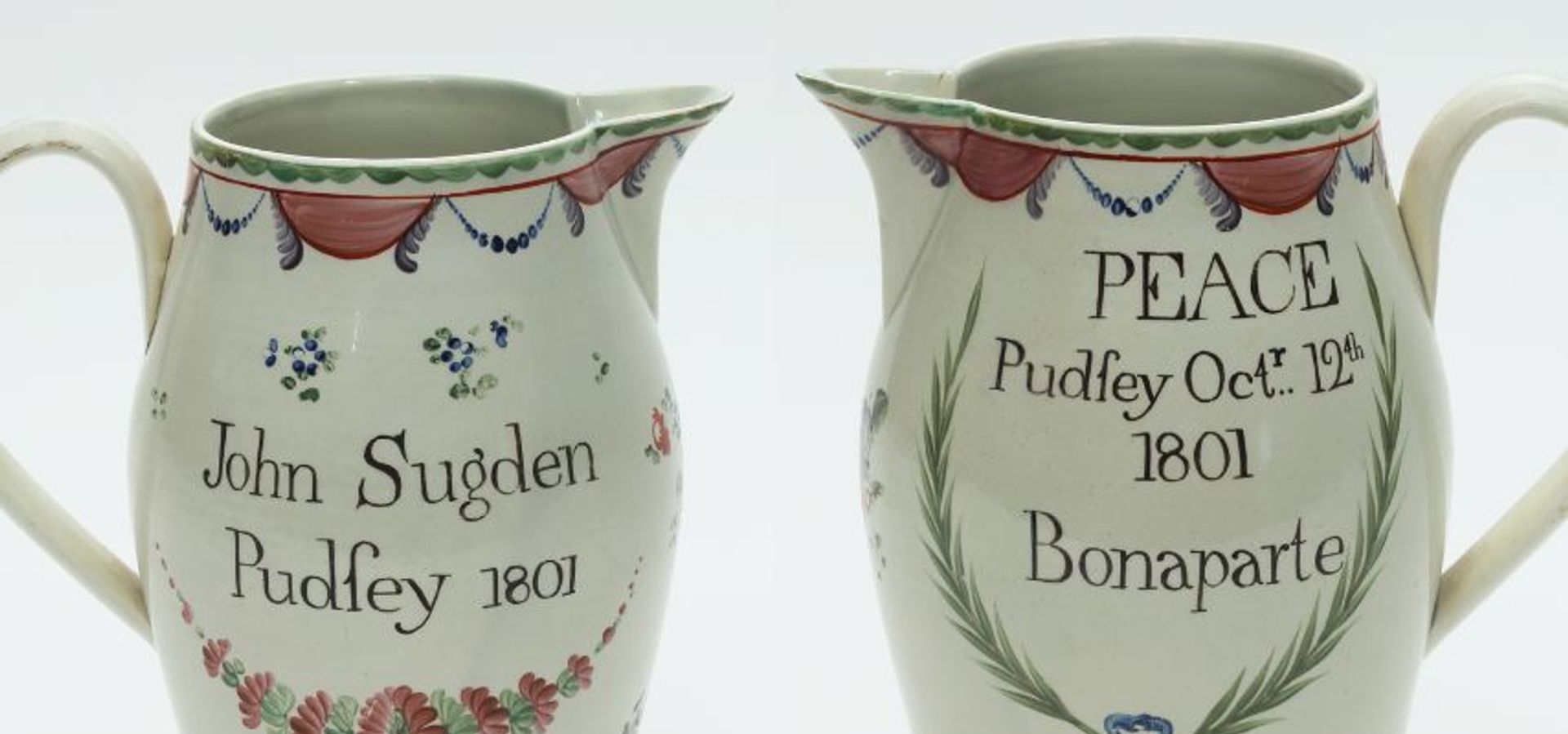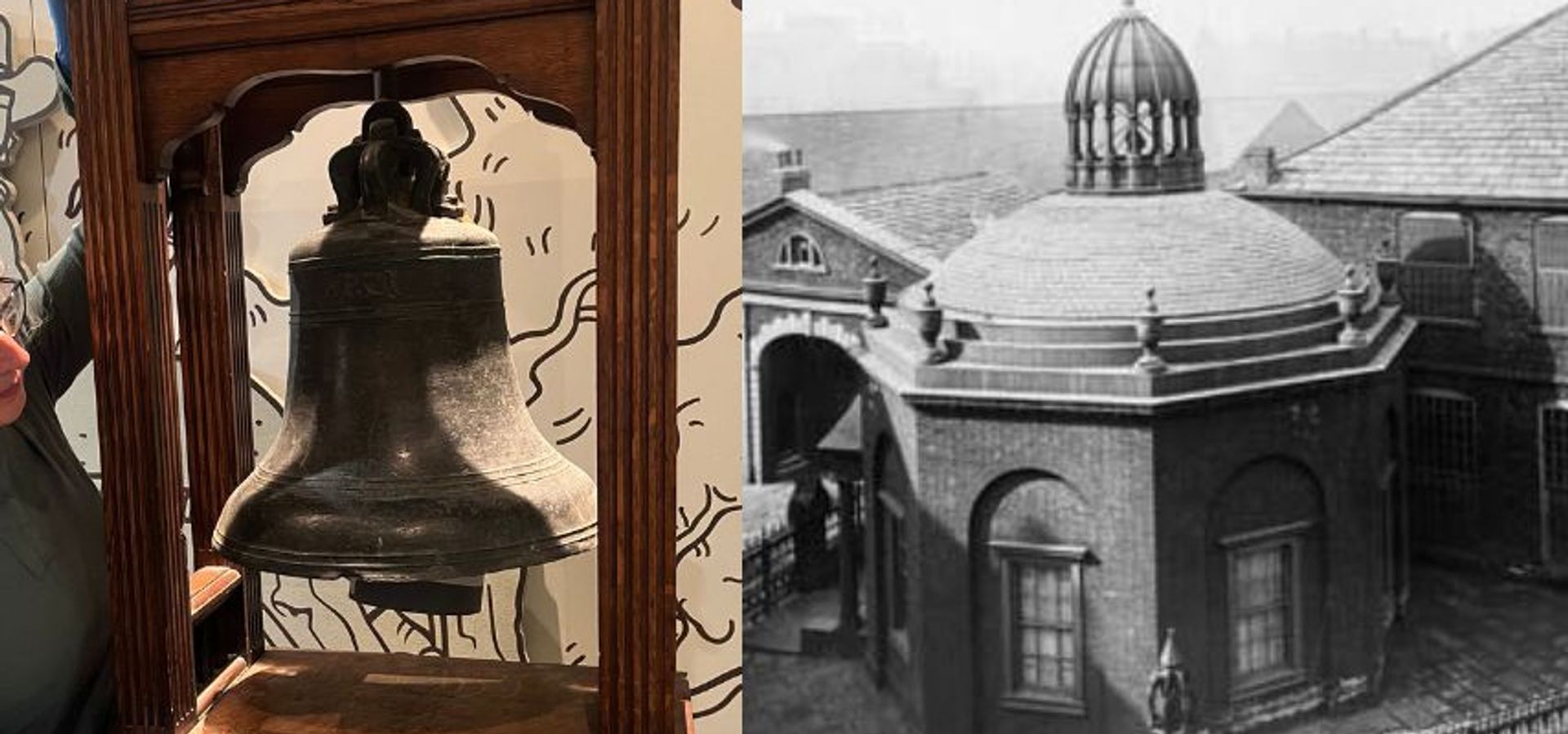
Grisly gadget is sure to get museum visitors talking
Press Release; 28 May 2025
Used in English towns and cities as early as 1574, scold’s bridles were employed to discourage individuals, usually women, who were judged to have spoken rebelliously, inappropriately or out of turn.
Also known as a brank, or witch’s bridle, the grisly object, believed to date from the 17th Century, has gone on show in the museum’s Leeds Story gallery as a sad reminder of a less enlightened age, having been originally collected by Morley historian Norrison Scatcherd.
When in use, the infamous implement’s solid iron frame would encase its unfortunate victim’s head, with a roughened iron plate located near the mouth.
The plate would then be placed in the mouth so the victim could not move their tongue without discomfort and the wearer would then be led through the streets on a chain held by one of the town’s officials.
In some towns, wearers would even be chained to a pillory, whipping post or market cross.

Kitty Ross, Leeds Museums and Galleries’ curator of social history, said: “It’s difficult to imagine a device as brutal and cruel as the scold’s bridle being used in towns and cities around the country, and it’s very clearly a relic from a time when the concepts of both human rights and equality were very different to what they are today.
“Displaying these types of objects is an important, tangible reminder of how far society has come as well as an opportunity to reflect on the challenges faced by people who lived during an age when such an inhumane contraption was seen as an acceptable form of punishment.
“Adding objects to the Leeds Story gallery is always rewarding too, because it gives visitors a chance to find out more about famous people, places and events alongside aspects of the city’s hidden history which they may never have heard before.”
The scold’s bridle is one of a number of exhibits recently added to the Leeds Story gallery, which tells the story of the city through the centuries.
A silver cup made by ill-fated Leeds goldsmith turned counterfeiter Arthur Mangey has also been put on display in the gallery, alongside a set of his coin clipping shears which were already on show.
Once an esteemed craftsman, commissioned to make a stunning silver gilt mace by Leeds City Council in 1694, Mangey was accused of forgery and, after being found guilty at trial, was hanged in York in 1696.
Other exhibits newly on display include a Pudsey peace jug, purchased with support from The Friends of Leeds City Museums and made by local potter John Sugden in 1801 to mark Napoleon Bonaparte’s signing of the Concordat of 1801 with Pope Pius VII.
Also on display is the impressive bell which once hung in the city's Coloured Cloth Hall in 1758. Once the largest building in Georgian Leeds, the building was used as offices and housed the Council Chamber of the Trustees.
In 1889 the Leeds Corporation paid £66,000 for the hall so they could clear it and make way for what is today City Square and the General Post Office building.
Councillor Salma Arif, Leeds City Council’s executive member for adult social care, active lifestyles and culture, said: “The story of Leeds is completely unique and includes so many surprising and intriguing chapters which have each in their own way played their part in creating the city we know today.
“It’s remarkable that we have so many objects on display to help tell that story and ensure visitors can learn more about the different aspects of our local heritage.”
Visit Leeds City Museum to learn more
Find out more about these items and many more at the Leeds Story Gallery at Leeds City Museum.


